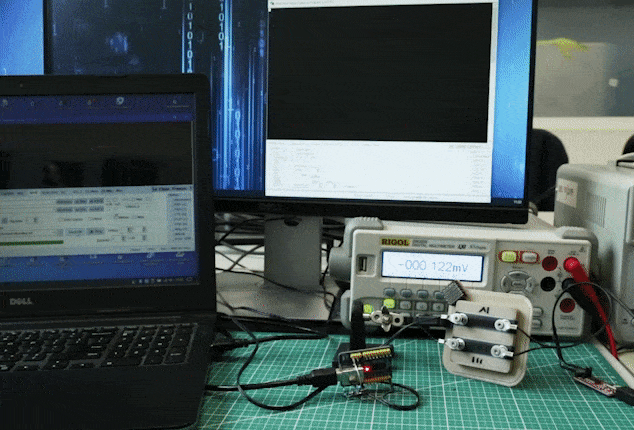Eddie Gonzales Jr. – MessageToEagle.com – This portrait of the Mona Lisa was transmitted via a very special route: its data arrived on this screen through a 3D-printed, space-grade polymer.
This achievement marks the first step towards a future when plastic printed parts can incorporate their own power and data links within their built structures, instead of relying on separate wiring and circuits.
“In recent years we have been working on 3D printing using ‘polyether ether ketone’ – or PEEK – which is a tough thermoplastic with a melting point up around 350ºC, able to do the equivalent job of some metal parts,” ESA non-metallic materials and processes engineer Ugo Lafont said.
“As a next step, we worked with Portuguese company PIEP to make the printable PEEK electrically conductive, by adding carbon nanotubes and graphene nanoparticles in just the right proportions.
“Now we asked Polish firm Zortrax, with reliable dual-print commercial printers in their portfolio, to produce test parts. We supplied them with samples of our two PEEK variants, then the company worked on optimizing the dual-print parameters to reliably print electrically conductive paths through a standard PEEK body.”
In data transfer tests, Zortrax engineers achieved a maximum transfer rate of 115 200 bits per second.
“To the best of our knowledge, this was the world’s first data transfer done through a device 3D printed entirely out of space-grade PEEK polymers,” says Michal Siemaszko, heading R&D at Zortrax. “Future lines of research will include printing components with functional USB ports to enable connecting the 3D printed models to computing devices directly, with no need for converters.”
Zortrax’s challenge was to implement printing with two different PEEK materials in dual extrusion. Achieving sufficiently high dimensional stability involved enhancing the rigidity of the extruder module.
Increased extrusion temperatures up to 480 °C degrees had to be combined with controlling the temperature of the printing chamber and build platform – to a maximum 200 °C and 220 °C respectively – to minimize the risk of warping or shrinkage of printed parts.
Because the printer has a large build space of 40 x 30 x 30 cm, entire 1- or 2-unit CubeSats – small, cheap nanosatellites built up from standardized 10-cm boxes – could in principle be printed in the future.
“A capability to 3D print simultaneously with two space-grade polymers paves the way to manufacturing composite components tailored to specific applications in the space industry,” says Jacek Krywko, technology solutions research specialist at Zortrax.
“This material has many potential applications and we are already evaluating other properties related to its compatibility to the space environment,” says Riccardo Rampini, heading ESA’s Materials’ Physics & Chemistry Section.
“We started with charging and electrostatic discharge properties, then UV radiation compatibility, next will come atomic oxygen resistance.”
The technology could also be applied to what is referred to as ‘4D printing’, with the fourth dimension being time. By using materials that change their properties in response to temperature or electrical current, features could be included that change their shape as needed.
Written by Eddie Gonzales Jr. – MessageToEagle.com Staff







